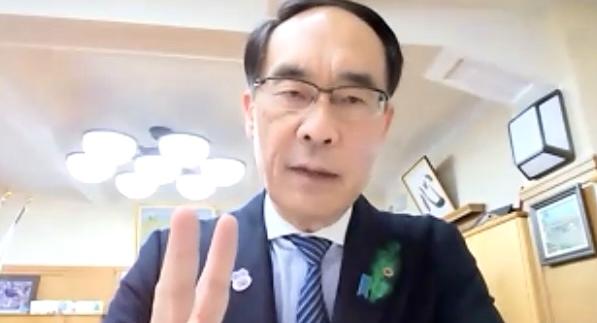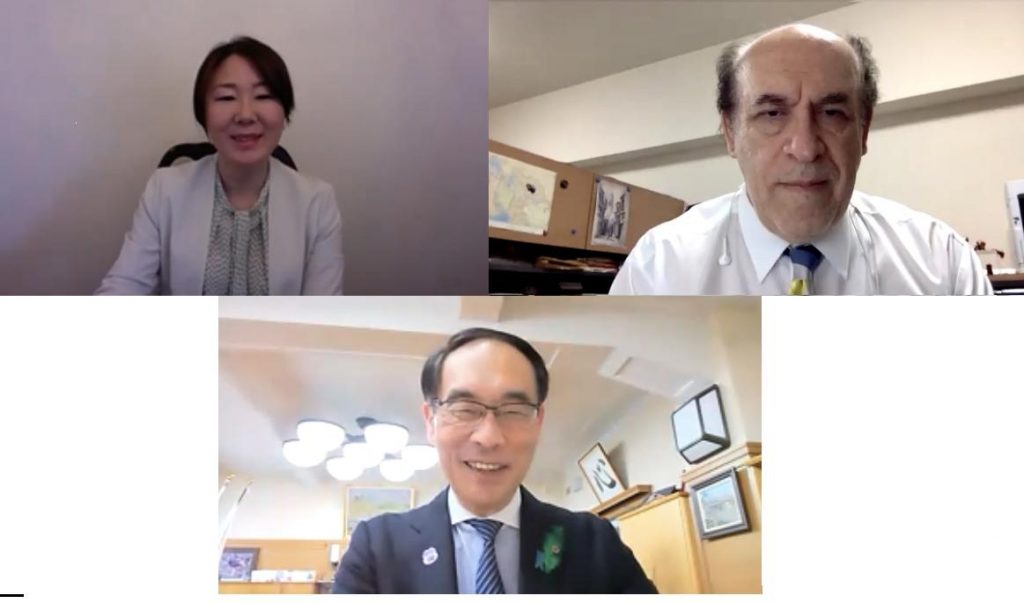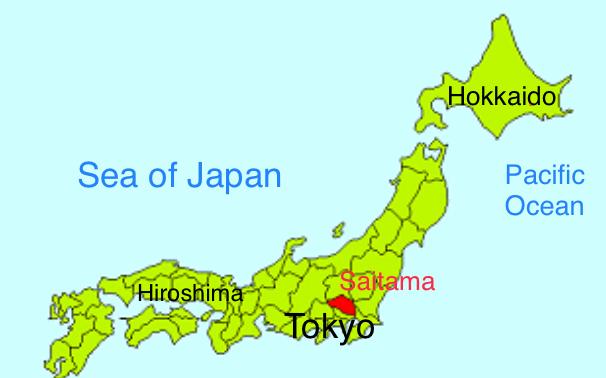





Khaldon Azhari
TOKYO: On the 150th anniversary of the foundation, of Saitama, the second largest prefecture after Tokyo and one of the host regions of the 2020 Olympics and Paralympics, Gov. Motohiro Ono said the most important goal at present is to control the coronavirus.
Sport is part of the DNA of Saitama Prefecture, which is located directly north of Tokyo, and has been waiting eagerly for the Olympics. Football is one of the most popular sports in Saitama and World Cup matches were held there in 2002, as were rugby matches in the 2019 World Cup.
“Looking ahead to the Olympic Games, we have lots of athletes taking part in sports such as cycle racing, swimming, etc.,” Gov. Ono said in an online interview with Arab News Japan. “I’m looking forward to welcoming citizens of Arab countries. Princess Haya of Jordan, who is an Olympic athlete, sometimes comes to Japan for horse riding.”
Ono’s father was an Olympic athlete in free style swimming and held the Japan record, but Ono junior follows a different path. “As for me, I am swimming through the strong tide of politics all the time,” he said.
On the possibility of canceling the Olympics, Ono responded: “That decision is in the hands of the IOC, the JOC, Japanese government and Tokyo Metropolitan Government, which is the host city. As a co-host prefecture, we have to be very sure, once the IOC and JOC decide to have the Olympic Games in Japan, that we ensure everyone’s safety.”
“But if we are going to have the Olympic Games, they should be looking towards the future with a sense of overcoming the coronavirus and hosting the Games. Through the Olympic Games, we can ensure that we live together under the spirit of the Olympics, because the Games are very meaningful and significant for the challenge of human beings. Of course, we want to do that.”
With the COVID-19 infection rate high in neighboring Tokyo, how welcoming does Saitama want to be to visitors?
“Of course, we have to control it, to restrict people, sometimes to encourage, sometimes to discourage; this is what we have to do,” the governor said. “So, it is like a tug of war. Sometimes we have to pull, sometimes not. Anyway, the reality that Tokyo is next to us will not change. So, we have to deal with Tokyo and cooperate with them in certain fields.
“Now is a time of restrictions. However, after the restrictions are over, we have to encourage people. But the world will not be the same after coronavirus. So, we have to encourage the changes in society through a digital transformation. We need to change how to work, how to cooperate, how to interact with people. Through digital devices, this is what we are doing. We are looking forward to the world after the coronavirus.”
On the challenges facing Saitama, Ono replied: “Our prefecture is changing. At this moment, we are probably at our population peak and maybe after a few years our population will start to decrease. Also, the number of elderly people is increasing and will be the highest in Japan, which means the highest in the world. So, we are facing probably a human challenge that we’ve never experienced before. We are looking at this future in the digital age and trying to incorporate the elderly into this world. Second, we need to think of our infrastructure, because the number of empty houses is increasing and we need to rebuild buildings, etc. We need to re-establish our society.”
Ono highlighted the importance of his prefecture for the Japanese economy. “Japan’s society and economy are very centralized,” he noted. “The Tokyo area – Tokyo, Saitama, Chiba and Kanagawa – is responsible for 40% of our GDP. Ninety-nine percent of Saitama companies are middle- or small-sized firms that directly support big companies. For example, Honda is located in Saitama Prefecture because small and medium enterprises – maybe around a thousand – are supporting Honda. This is a very good point.”
“Secondly, Saitama is really convenient in terms of transportation, the most convenient prefecture in Japan. As you know, apart from the Tokaido Shinkansen (bullet train), all Shinkansen trains pass through Saitama. As for highways, in the metropolitan area more than half of the highways pass through Saitama. So, we need to have good conditions for a better economy and transportation. Otherwise, those big companies like Honda cannot survive.”
Governor Ono is also known as a prominent Arabist in Japan and expressed the hope Saitama Prefecture or City can make a sister city relationship with an Arabic counterpart.
“We have 30 years of sisterly relations with Ohio State, Shanxi Province in China, and others in Germany and Mexico; I am ready to be a bridge with any Arab countries,” he said.
“I studied in Egypt and became a real diplomat in the UAE and Jordan, and finally I was in Syria during its hard times. People of Arab countries were very friendly to Japanese. I am very proud to be a bridge between Japan and Arab countries.”
Governor Ono has another important mission apart from controlling the coronavirus. “I am undertaking a digital transformation,” he states. “After I was assigned as governor, I started to kick out paper from my office. We have lots of laptops and telework communications. Eliminating paper is the very first step towards a digital transformation. If you are using paper, you cannot have a digital transformation.”
However, he admitted to having a fax in his office. “But I never use it,” he pointed out. Japan’s administrative reform minister, Taro Kono, wants to eliminate fax machines in his campaign to digitalize Japan, and Ono is on board with that.
Saitama is not seen as the most exciting prefecture in Japan; and in some surveys branded as the most unexciting prefecture. Ono has something to say about that.
“It all depends on how you look at things. If I want to go swimming, I won’t choose Saitama; I will go to Okinawa. However, last year, the biggest population increase and shifts in the country happened toward Saitama,” Ono said proudly.
“Only Saitama in the Kanto seems to be attracting Tokyo people, especially after corona as the trend of remote work took hold in Japan. But since they still want to be near the Japanese capital, they have started buying homes in Saitama. Our prefecture is very strong when it comes to natural disasters. This is also another point why they choose us. Also, as I mentioned, it’s a transportation hub. These are three very good points. Also, in the last 10 years, Saitama is the No.1 prefecture for establishing main company offices of major companies.”
(With inputs from Teruyo Narita Yamaguchi)